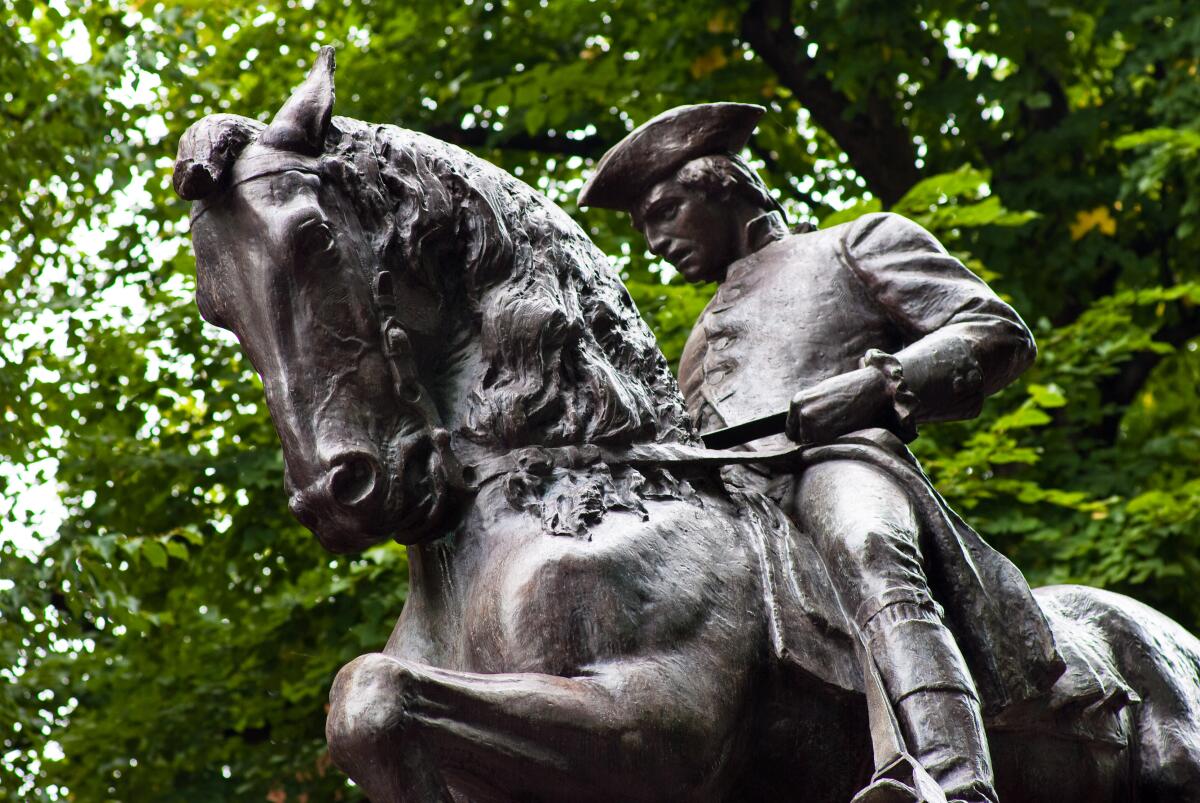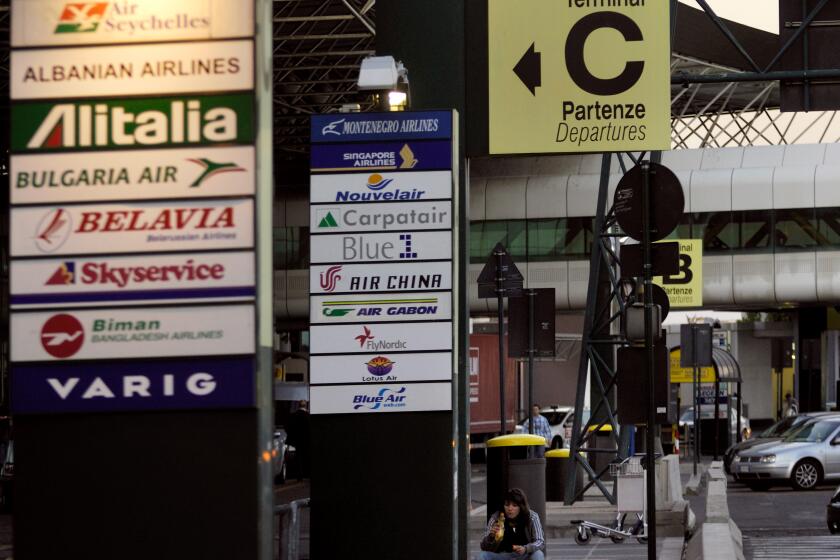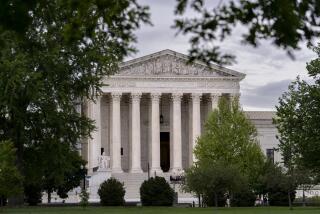Why my son’s Koreatown school changed its mascot from a patriot to a panther

- Share via
Last year, my son’s school, Pilgrim School in Koreatown, changed its mascot.
This act isn’t particularly shocking. Schools and professional sports teams have been boycotting and switching mascots for years, especially as education, language and society evolve and certain words or phrases become outdated and offensive.
But unlike the previous name for the NFL’s Washington Commanders, Pilgrim’s mascot wasn’t a racial or ethnic slur.
Pilgrim’s mascot was a patriot.
While I wasn’t very invested in what our mascot was, I did wonder if, especially with the rampant rise of book banning in the United States, this change could be part of a slippery slope of attaching stigma to words — and deciding who gets to attach that stigma.
You (and Scott Adams) can say or write whatever you want, but there will be consequences. It’s not self-censorship to think before you speak.
Founded in 1958 by the First Congregational Church of Los Angeles in what was then a predominately white and affluent neighborhood, it made sense at the time that Pilgrim’s mascot would be a patriot, its logo an image of the Mayflower, and its colors red, white and blue. It was a post-World War II era of American optimism and superiority, after all.
Sixty-plus years later, the school has severed affiliation with the church, the neighborhood has evolved and there’s a more progressive view on colonialism. For the first time, Pilgrim’s prospective families asked questions about the school’s name. Faculty and leaders wondered whether some families weren’t applying at all because of their own preconceived assumptions about the school’s ethos based on these factors.
Educators know that changing the school’s name would be complicated and could cause more confusion. As a less risky step, the school switched its colors to blue, orange and green. And, after calling for a student vote, the mascot was changed to a panther.
Pilgrim’s not the only school to have such a crisis of faith. In 2020, Jefferson Lincoln Elementary in Centralia, Wash., changed its mascot from patriots to tigers upon staff and community members’ suggestions. In 2021, Liberty High School in Powell, Ohio, kept its mascot the patriot but gave the logo a more inclusive look (instead of a Paul Revere-like character in a pointed hat, it’s now an evocation of Lady Liberty surrounded by stars).
A patriot is not the only formerly innocuous mascot to be brought into question. North Hollywood’s Oakwood School retired its gorilla mascot in 2020 because the animal brought up “connections to antiblackness, violence and other racist tropes.” The school is now represented by an owl.
Contributor: These two peaks in the San Gabriel Mountains honor racists. They must be renamed
Through their namesakes, Mt. Baden-Powell and Mt. Burnham share a history of scouting, militarism, toxic masculinity — and white supremacy.
Definitions of “patriot” and “patriotism” are also becoming murky outside of the classroom. In the lead up to this year’s Independence Day celebration, the Associated Press ran a story with the headline “In a polarized US, how to define a patriot increasingly depends on who’s being asked.” Earlier this year, former President Donald Trump called the people who stormed the Capitol on Jan. 6, 2021 “great patriots.” Conversely, Vice President Kamala Harris described civil rights leader Jesse Jackson upon his July retirement from his Rainbow PUSH Coalition as “one of America’s greatest patriots.”
But, according to Merriam-Webster, the concept of a “patriot” has long been up to interpretation. It notes that the word grew in prominence in the English language during the 16th and 17th centuries; someone would call you a good patriot if you agreed with their political or religious views (which, given that era in England: same difference).
“The word took on negative connotations as it was applied first to hypocritical patriots — those who espoused loyalty to the Crown but whose actions belied that espousal,” the dictionary further explained.
Pilgrim’s head of school Patricia Kong says she struggles with how “being a patriot is a bad word, almost, for some people. I think people are losing the meaning of what that word means.”
Or, perhaps this is all a lesson in overthinking. My Little Rock, Ark., high school also uses the patriot mascot. I emailed the current principal to ask if there’d been any talks of changing to a different one. Not in the 18 years he’s been there.
It used to be the word ‘so’ never caused problems, never bothered anyone. It was the working man’s ‘therefore.’ Now it’s gone phony, insincere, so-so.
The beauty of language is that it’s an ever-evolving art form that can alter by era or speaker, and by inflection and punctuation. I appreciate that my son’s school saw changing its mascot as a branding exercise that might result in more and different voices being added to his classroom. I don’t think this action is wholly unpatriotic because questioning your patriotism and what your country represents are some of our country’s founding principles.
Does taking the word “patriot” away weaponize it the same way using it to describe mob mentality does? I don’t know. But respectfully debating this idea seems almost … patriotic.
Whitney Friedlander is a journalist in Los Angeles.
More to Read
A cure for the common opinion
Get thought-provoking perspectives with our weekly newsletter.
You may occasionally receive promotional content from the Los Angeles Times.











